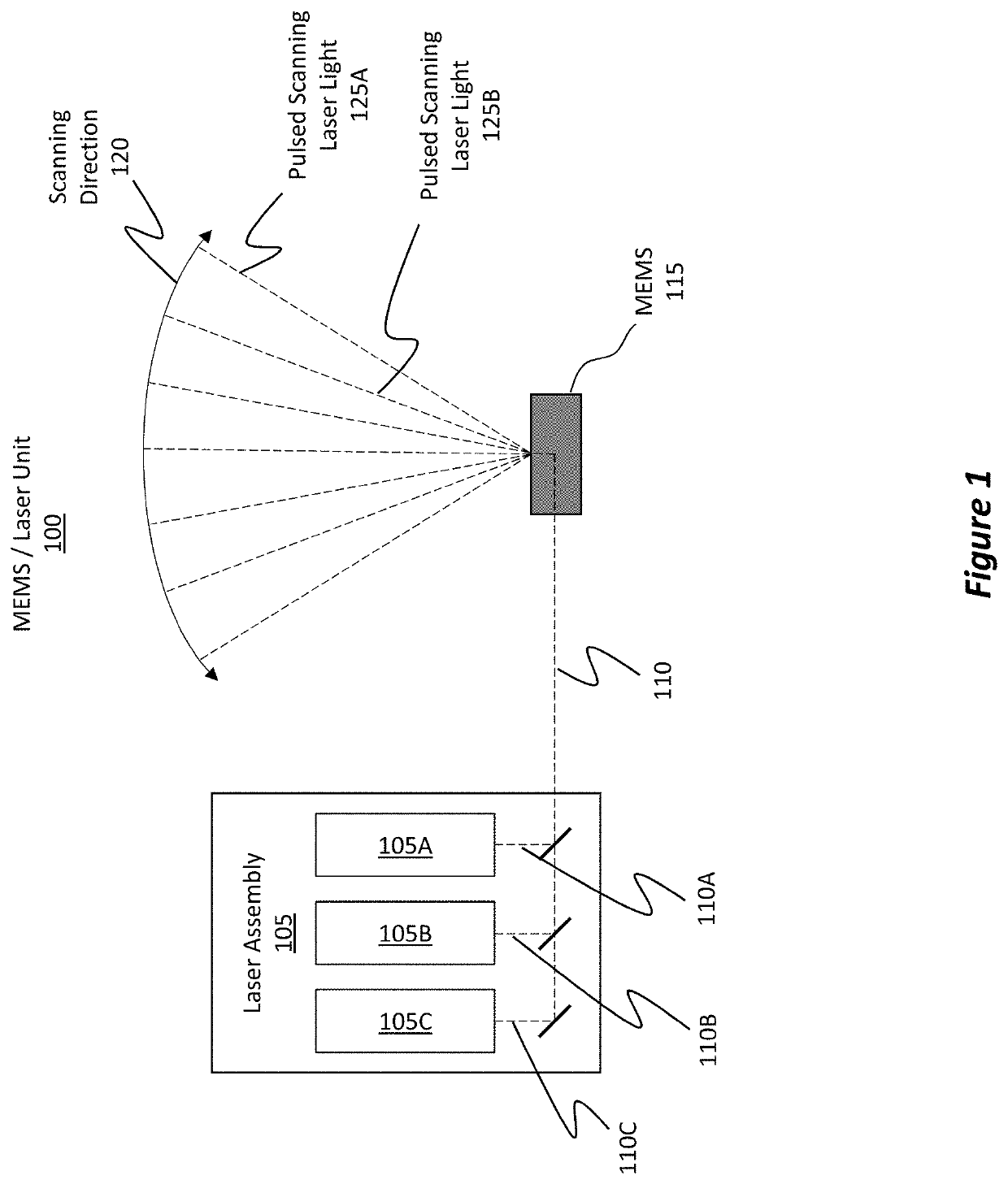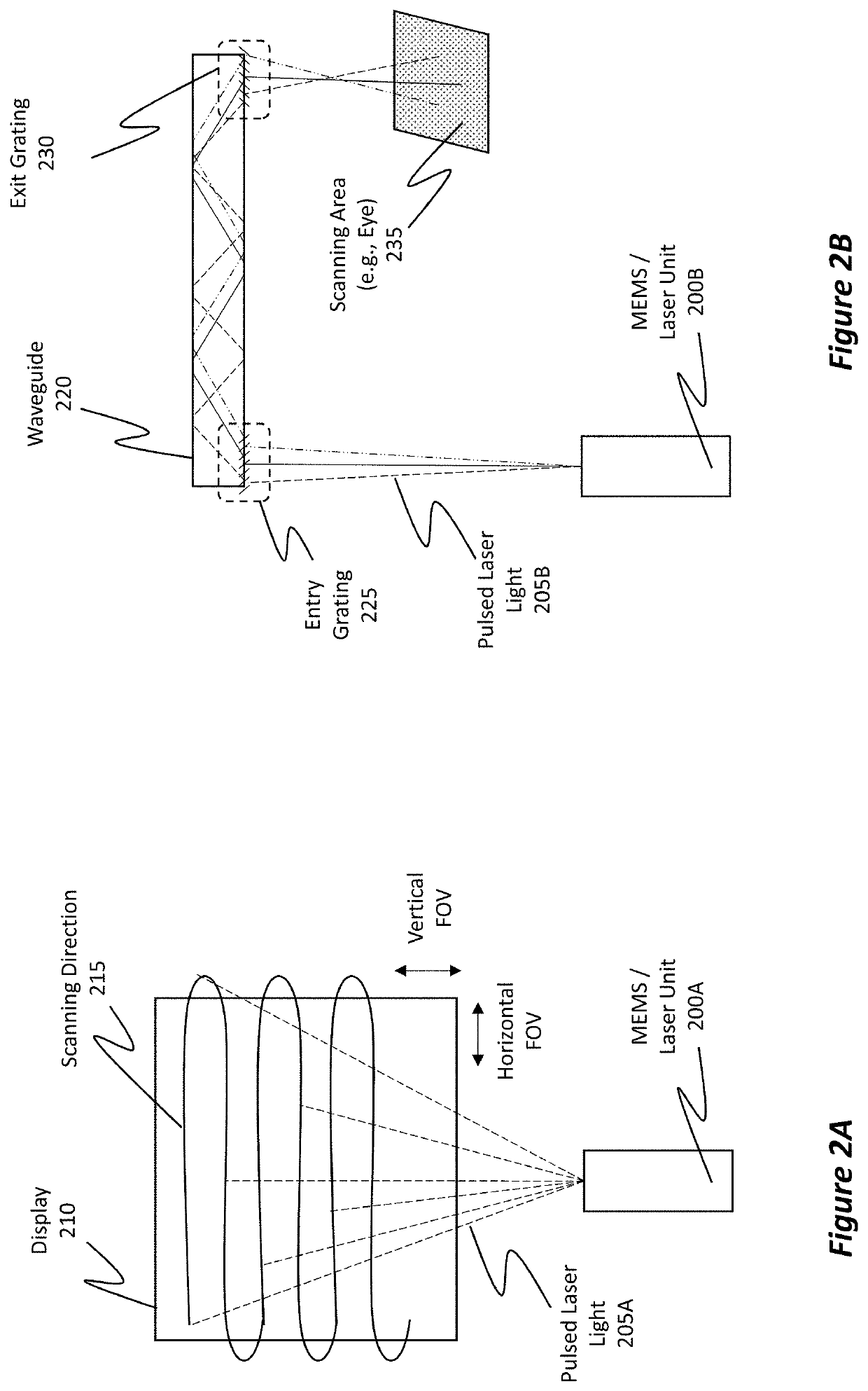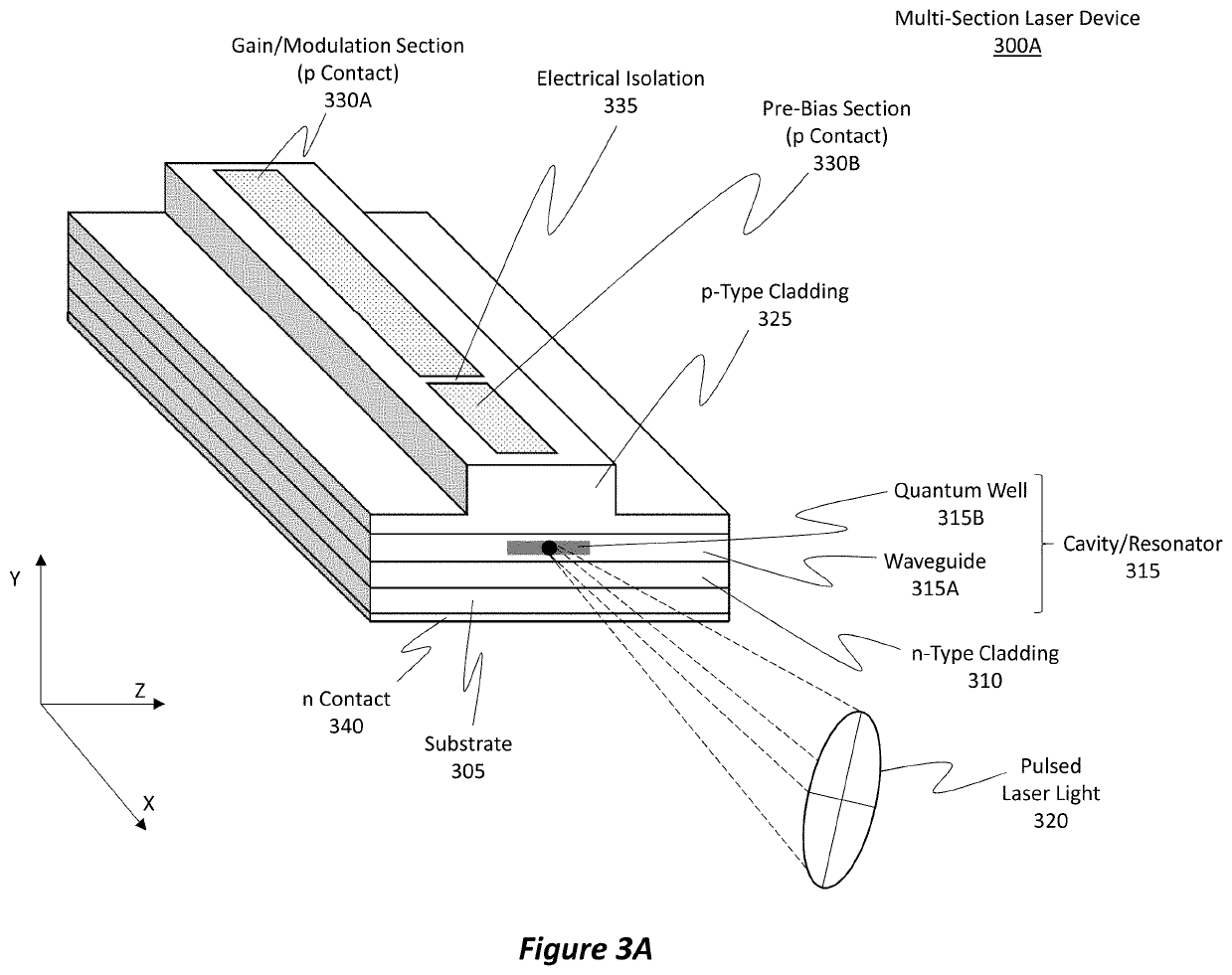Multi-section laser for fast modulation and broad spectral linewidth
a multi-section laser and broad spectral linewidth technology, applied in semiconductor lasers, planar/plate-like light guides, instruments, etc., can solve the problems of introducing fringe image artifacts, many challenges, and costs, and the process of immersing users into a mixed-reality environment creates many challenges, difficulties, and costs, so as to reduce the turn-on delay of laser diodes, reduce the turn-on time, and increase the spectral linewidth
- Summary
- Abstract
- Description
- Claims
- Application Information
AI Technical Summary
Benefits of technology
Problems solved by technology
Method used
Image
Examples
Embodiment Construction
[0022]The disclosed embodiments include systems, methods, and devices that include multi-section lasers and control laser driver circuitry to reduce a turn-on delay associated with the multi-section lasers, and which, thereby, enable / configure the multi-section laser to generate laser light having a spectral linewidth that satisfies a threshold linewidth requirement.
[0023]In some embodiments, a multi-section laser is specifically configured with a gain / modulation section and a pre-bias section, as well as laser driver circuitry for independently applying current to the different sections of the laser. Both of the laser sections are electrically connected to a diode laser resonator and are independently controllable via the laser driver circuitry. Initially, a minimum amount / threshold of pre-bias current is applied to the pre-bias section, thereby causing photons to be spontaneously emitted, where these photons' wavelengths span a broad range of wavelengths. During this time, the las...
PUM
| Property | Measurement | Unit |
|---|---|---|
| FWHM | aaaaa | aaaaa |
| FWHM | aaaaa | aaaaa |
| FWHM | aaaaa | aaaaa |
Abstract
Description
Claims
Application Information
 Login to View More
Login to View More - R&D
- Intellectual Property
- Life Sciences
- Materials
- Tech Scout
- Unparalleled Data Quality
- Higher Quality Content
- 60% Fewer Hallucinations
Browse by: Latest US Patents, China's latest patents, Technical Efficacy Thesaurus, Application Domain, Technology Topic, Popular Technical Reports.
© 2025 PatSnap. All rights reserved.Legal|Privacy policy|Modern Slavery Act Transparency Statement|Sitemap|About US| Contact US: help@patsnap.com



